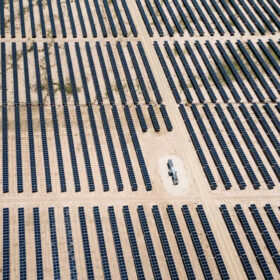Borderline La Niña may brighten winter for U.S, Mexico, Brazil
In a new weekly update for pv magazine, Solcast, a DNV company, forecasts drier and sunnier conditions in the forthcoming winter across key solar areas in the southern United States, Mexico and Brazil, driven by borderline La Niña conditions.
X8 series: Potencia, flexibilidad y adaptabilidad para el almacenamiento de energía en baterías
En este pv magazine webinar podrá conocer cómo el nuevo sistema X8 series de Jema Energy permite adaptarse a las tendencias para dar respuesta a los sistemas de almacenamiento de baterías. Además de las novedades del sistema se presentará un caso práctico de Black Start y Grid Forming implementados en una isla.
Apartment battery systems attractive after São Paulo storm blackout
Solar-plus-storage systems are attracting homes and businesses to guarantee energy supply and avoid losses in emergencies. Brazilian solar trade body Absolar estimates battery prices have fallen around 90% over 15 years.
Panama launches energy auction
The Panamanian authorities have kicked off an energy auction open to new and existing power plants. Wind, solar, hydropower, and biomass projects are eligible to participate in the procurement exercise.
CIP building 1.1 GWh standalone battery storage project in Chile
Copenhagen Infrastructure Partners (CIP) has approved a final investment decision and started construction of the Arena battery energy storage system (BESS) project, with the aim of supplying energy from the first quarter of 2026.
The Hydrogen Stream: Infinity sends fuel cell to NASA for lunar testing
Infinity says it has delivered a fuel cell prototype to NASA for ground testing, aimed at demonstrating a regenerative energy storage system for potential lunar applications.
Persistent Amazon fires slash solar irradiance in adjacent regions
In a new weekly update for pv magazine, Solcast, a DNV company, reports that this winter brought dry and warm conditions to most of South America, resulting in higher-than-normal irradiance across the continent. The conditions have been particularly dry in the Amazon basin, favoring wildfire activity, and the resulting smoke has reduced solar irradiance along the plume’s path.
Batteries cheaper than new thermal plants for Brazil’s reserve grid capacity
Analyst Aurora Energy Research estimates battery storage systems cost 10% less than new combined cycle thermal power plants – and could be 29% cheaper. pv magazine spoke to Aurora’s Inês Gaspar about the figures.
PV system sizing for 100% self-consumption
A group of researchers has proposed a new method for the sizing of PV systems that do not rely on an anti-dump system and operate without the possibility of injecting power into the grid. The novel approach requires an estimate of the annual hourly profile and the minimum power demanded, as well as the use of an irradiance meter and an electrical network analyzer.
144 MW La Unión solar plant inaugurated in Colombia
Spanish company Zelestra officially connected the plant to the electrical grid last June. Colombian President Gustavo Petro, along with other authorities, participated in the ceremony.









